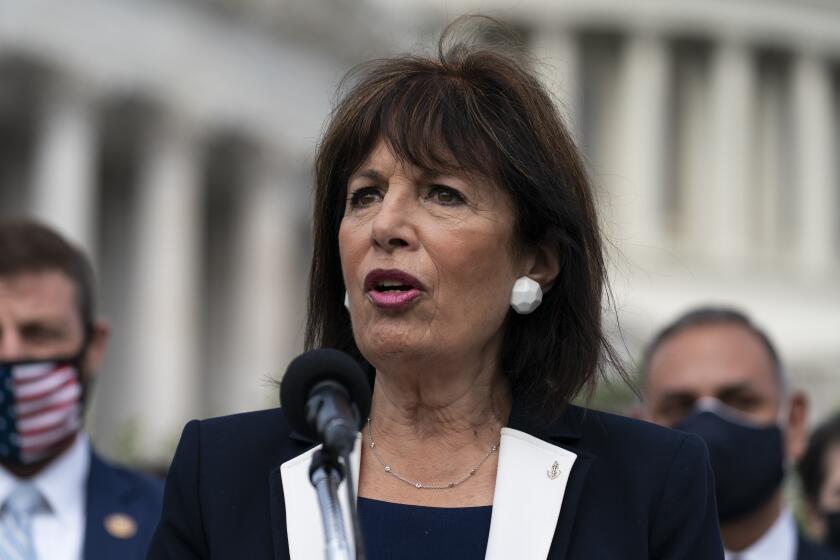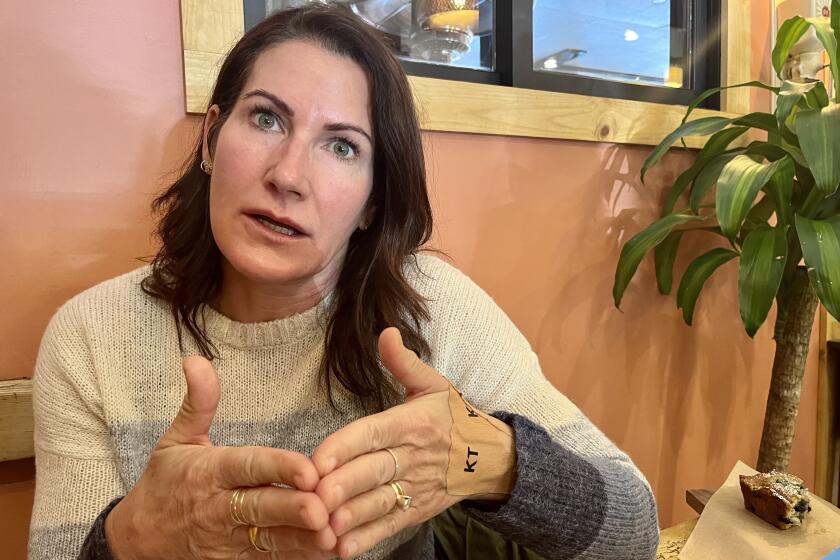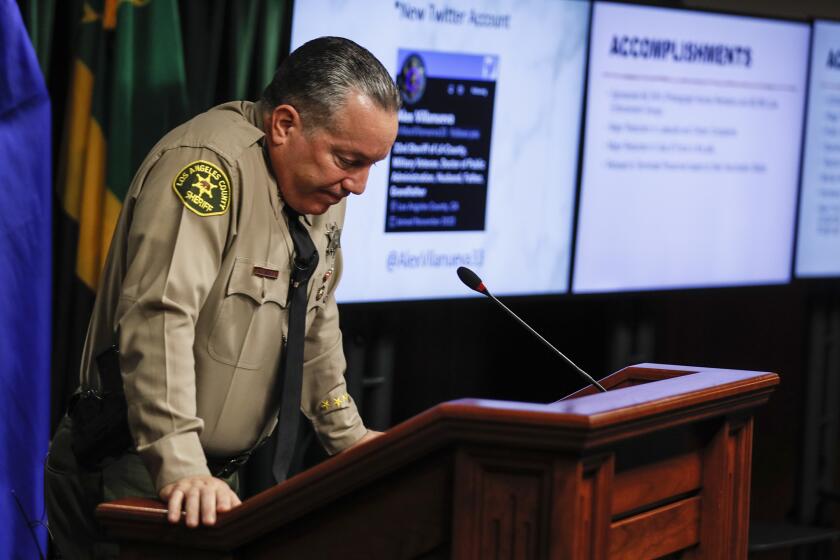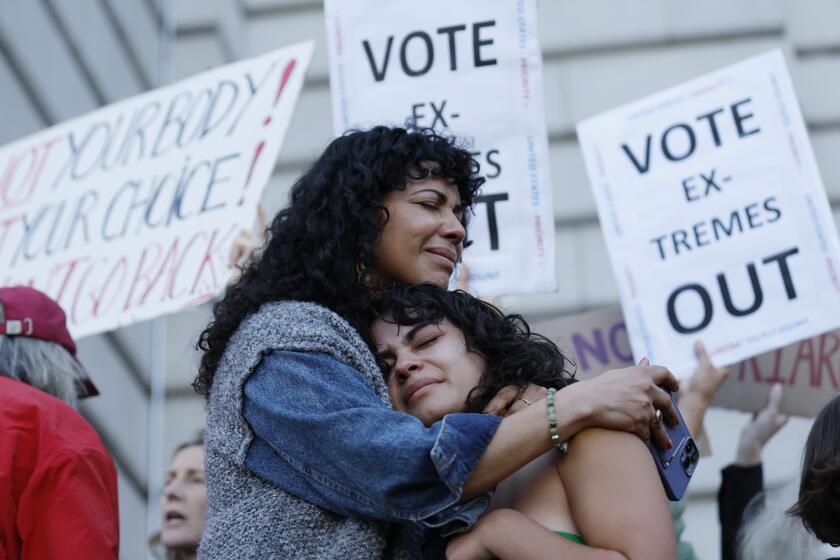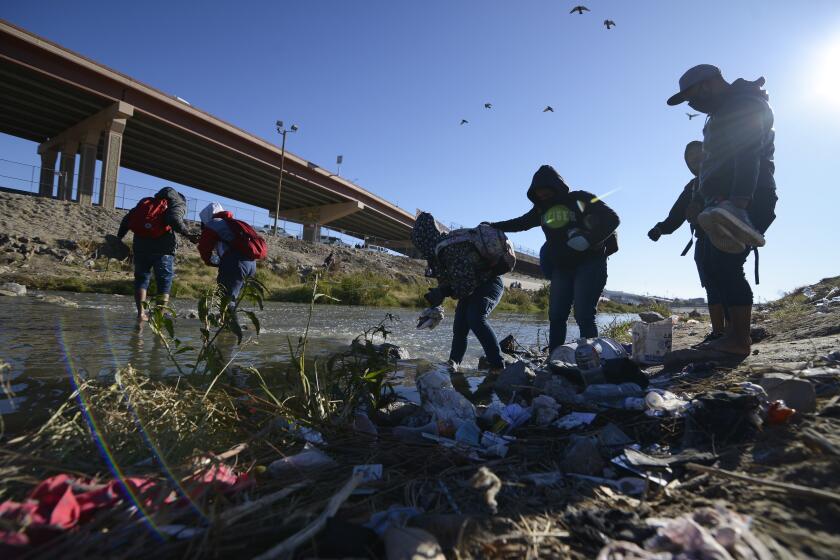Column: In the desert, history blooms as Arizona tops records with a fifth female governor

- Share via
Forget, for a happy moment, Arizona’s ungodly heat and the abundance of wackadoodles who’ve made it a thriving center of election denialism and other political buffoonery.
The state, which has a proud history of going its own way, boasts another, more salutary distinction: When Democrat Katie Hobbs was inaugurated Thursday, it marked the formal installation of Arizona’s fifth female governor, a number that easily surpasses that of any other state.
(Hobbs took the oath of office Monday as required by the state constitution. The public ceremony was delayed for observance of the New Year holiday.)
Kansas and New Hampshire, the runners-up to Arizona, have had three women serve as governor. Oregon will match that number on Monday when Democrat Tina Kotek is sworn in.
A handful of states have had two. Nineteen, including cutting-edge California, have never had a female chief executive.
So what is it about Arizona? Is it something in the water? Or the lack of it?
The answer, it seems, lies in some combination of the state’s frontier history, the rascality of two sordid politicians and, perhaps above all, an unusual line of succession that has made the secretary of state next up when the governor leaves — or is pushed out — early.
Paradoxically, a dash of sexism may have also helped elevate women to the state’s highest office.
Column: California lawmaker who survived Jonestown, Jan. 6 reflects on Trump, Jim Jones and Congress
The Bay Area’s Jackie Speier is retiring after more than 40 years in public life that began when she was shot five times in a deadly ambush in Guyana.
From its beginning as a state, Arizona has been less wed than others to traditional gender roles. Unlike in the snooty East, with its fixed ways and straitened norms, it was not unusual to find women holding positions of authority in the less-settled West.
“In large part you’re talking about a cowboy culture where women literally held down the fort, or held down the ranch,” said Stacy Pearson, a Democratic strategist in Phoenix.
Indeed, Arizona’s admission to the union was delayed until 1912 due to its push for women’s suffrage. The 19th Amendment, guaranteeing women the right to vote, was not ratified until eight years later.
Still, accustomed as Arizona voters may have been to powerful women, it was not until 1988 that the state got its first female governor, Democrat Rose Mofford. Because Arizona has no lieutenant governor, Mofford, the secretary of state, became governor when Republican Evan Mecham was tried and impeached for obstructing justice and misusing state funds.
That established a pattern of female secretaries of state moving into the top job. (That same year, Arizona voters overwhelmingly passed a ballot measure cleaning up language in the state constitution to make it clear women were eligible to serve as chief executive.)
In 1997, Secretary of State Jane Hull became governor when fellow Republican Fife Symington stepped down after being convicted of fraud. Hull won a full term in 1998 and became one of the “Fabulous Five” — the women who were elected in Arizona that year as governor, secretary of state, attorney general, treasurer and superintendent of public instruction.
It was the first and only time that a state has been run by an all-female slate of top officeholders.
Arizona’s Democratic Atty. Gen. Janet Napolitano was elected its third female governor in 2002, and Secretary of State Jan Brewer, a Republican, became the fourth in 2009 when Napolitano resigned to lead the Department of Homeland Security under President Obama.
Each of those women struck a blow for gender equality. But some less-than-broad-minded thinking may have also helped contribute to Arizona’s record number of female governors.
The word “secretary” in secretary of state suggests an administrative job that many women — either by choice or lack of options — had been successfully holding down for decades. Many voters, consciously or not, were probably predisposed to support a female running for that office, said campaign strategist Chuck Coughlin, a Republican-turned-independent who helped elect Brewer secretary of state and reelect her as governor.
Serving as secretary of state put Mofford, Hull and Brewer in place to become chief executive when the job opened up.
The post also served as a springboard for Hobbs, the overseer of Arizona’s elections, who defeated Republican Kari Lake in November after the TV personality and Trump wannabe turned off voters by shamelessly parroting his election lies.
A falsehood spread in a Bay Area school board race shows how disinformation is being used even in small-bore elections. “It was only a matter of time,” says one expert.
On the same ballot, voters also approved a measure creating the job of lieutenant governor, to be elected on a joint ticket with Arizona’s governor starting in 2026. Going forth, that underling will take over if a governor leaves office early.
By now, though, it seems women don’t need the beneficial line of succession that made Brewer and the others governor. The Hobbs-Lake matchup demonstrated that.
“I think Arizona voters have simply gotten used to having a woman chief executive,” said Napolitano, who headed the University of California system for nearly seven years before stepping down in 2020 to teach public policy at UC Berkeley.
She wondered when California will break its “gubernatorial gender barrier.”
Good question. Maybe 2026?
More to Read
Get the latest from Mark Z. Barabak
Focusing on politics out West, from the Golden Gate to the U.S. Capitol.
You may occasionally receive promotional content from the Los Angeles Times.

